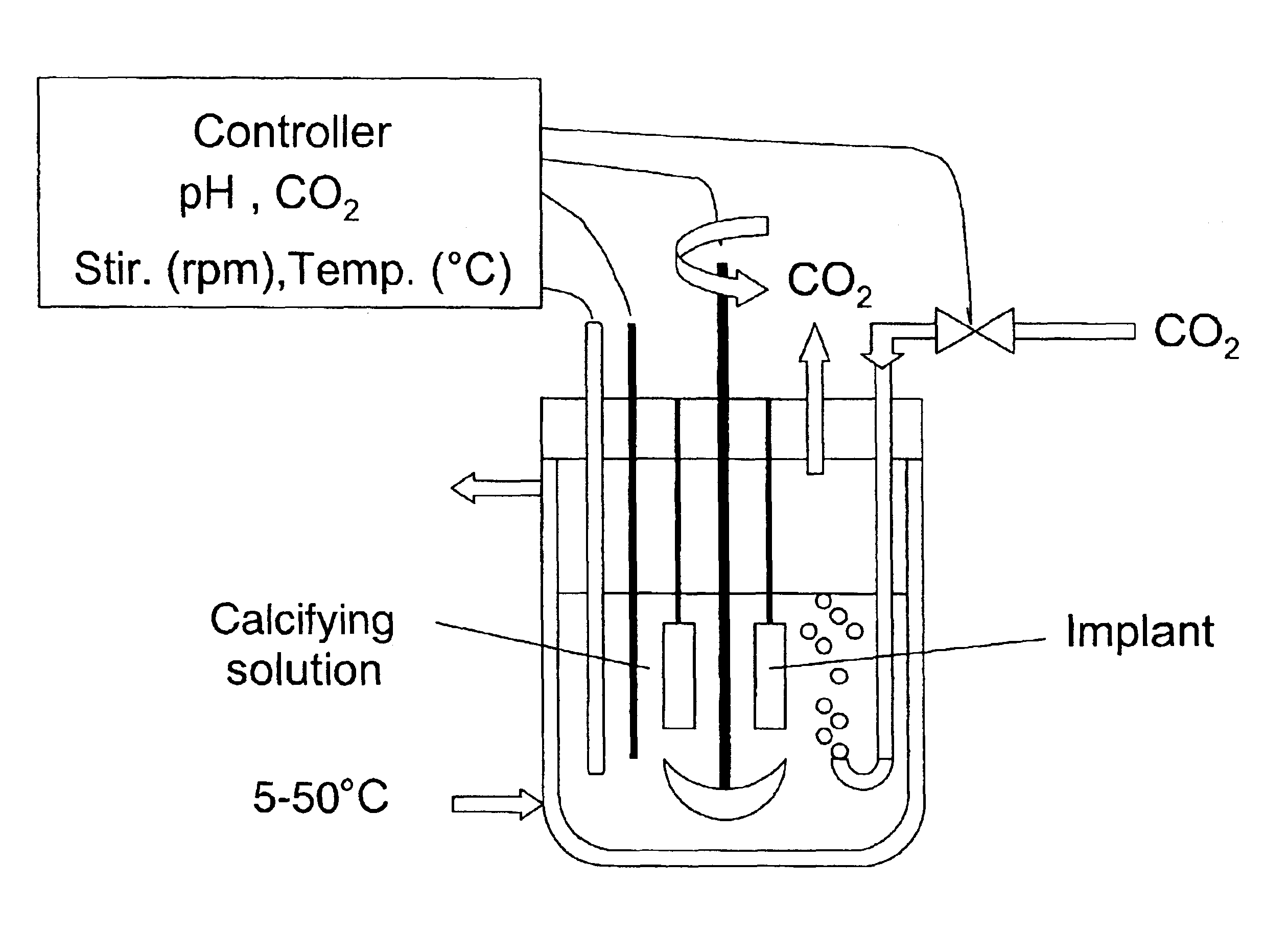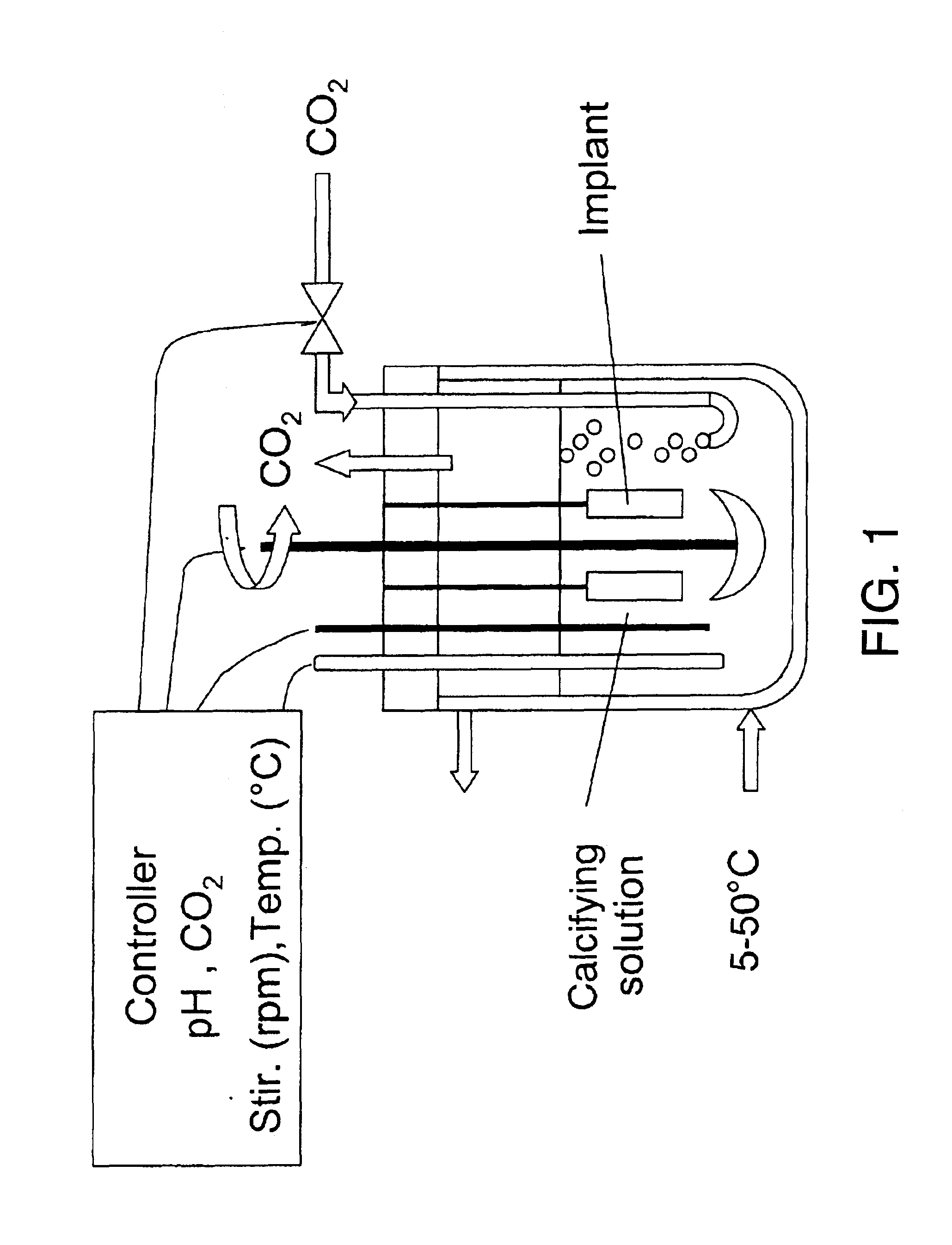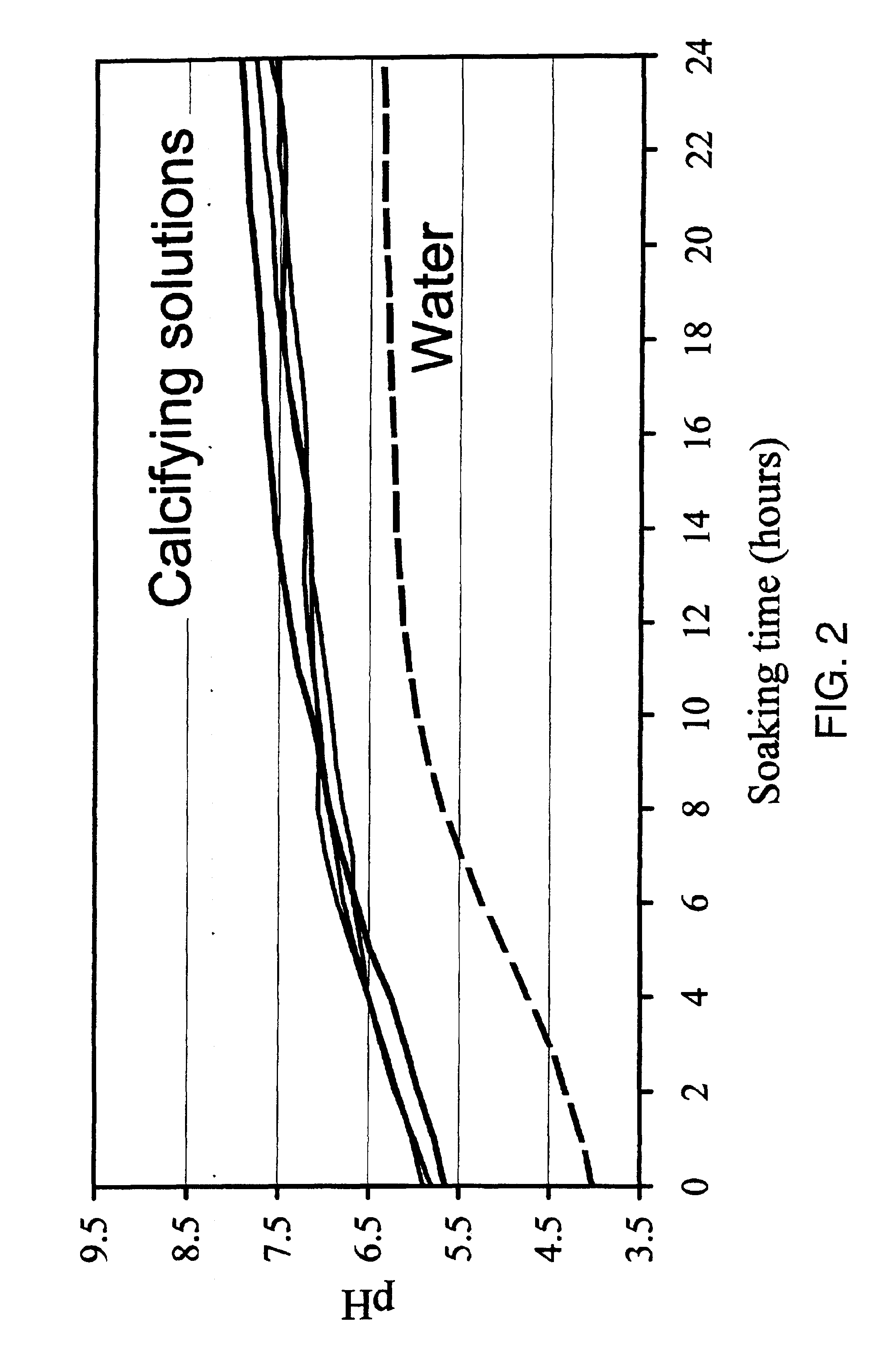Method for coating medical implants
a technology for medical implants and coatings, applied in the field of coating medical implants, can solve the problems of inability to achieve experimentally demonstrated bioactivity of such coatings, material can be deposited on a substrate in the present process, and cannot be prepared with conventional plasma spraying techniques,
- Summary
- Abstract
- Description
- Claims
- Application Information
AI Technical Summary
Problems solved by technology
Method used
Image
Examples
example 1
Pieces of titanium alloy are cut from a sheet of commercially available Ti6Al4V foil or rods. Ti6Al4V plates of 10.times.10.times.2 mm and cylinders of 5 mm in diameter and 10 mm in length are used. Ti6Al4V wires of 1 mm in diameter are also coated with the bioactive carbonated calcium phosphate layers. Prior to coating, the implants are sand- or grit-blasted to increase their surface roughness. The implants are ultrasonically cleaned for 15 min in acetone, then ethanol (70%) and finally pure water. The Ti6Al4V plates are then etched for 30 min in an ultrasonic cleaner with a concentrated acid mixture containing distilled water, hydrochloric acid (HCl, 36%) and sulfuric acid (H.sub.2 SO.sub.4, 96%) with a volume fraction of 2:1:1. A soft etching procedure can be alternately applied by soaking the implants into a mixture made of 994 ml of pure water, 2 ml of hydrofluoric acid (HF, 40%) and 4 ml of nitric acid (HNO.sub.3, 50%). The etched Ti6Al4V plates were thoroughly washed with pur...
example 2
Porous tantalum implants (Hedrocel.TM., Implex Corporation, Allendale, N.J.) of respectively 2.5 and 5 mm in diameter and 5 and 10 mm in length are used. The implants are ultrasonically cleaned for 10 minutes in acetone, ethanol (70%) and finally pure water. The implants are then placed into meshed bags and hold into the bioreactor system. After autoclaving, the implants are soaked into a calcifying solution as described in example 1. After coating, the coated devices are ultrasonically rinsed with pure water and sterilized with an autoclave. The SEM observations and EDAX analyses confirm the uniform deposition of a well-attached dense calcium phosphate layer on and into the porous tantalum implants (FIGS. 5 and 6).
example 4
Porous tantalum cylinders were coated in a procedure analogous to that of example 1. After soaking in the calcifying solution (which had the same composition as the calcifying solution in example 1), a thick and crystalline biomimetic layer covered the tantalum cylinders evenly. The layer was composed of octacalcium phosphate (OCP, Ca.sub.8 (HPO.sub.4).sub.2 (PO.sub.4).sub.4.5H.sub.2 O) crystals aligned perpendicularly from the surface of the substrate, as determined by SEM on a cross-sectioned cylinder.
PUM
| Property | Measurement | Unit |
|---|---|---|
| thickness | aaaaa | aaaaa |
| thickness | aaaaa | aaaaa |
| temperature | aaaaa | aaaaa |
Abstract
Description
Claims
Application Information
 Login to View More
Login to View More - R&D
- Intellectual Property
- Life Sciences
- Materials
- Tech Scout
- Unparalleled Data Quality
- Higher Quality Content
- 60% Fewer Hallucinations
Browse by: Latest US Patents, China's latest patents, Technical Efficacy Thesaurus, Application Domain, Technology Topic, Popular Technical Reports.
© 2025 PatSnap. All rights reserved.Legal|Privacy policy|Modern Slavery Act Transparency Statement|Sitemap|About US| Contact US: help@patsnap.com



